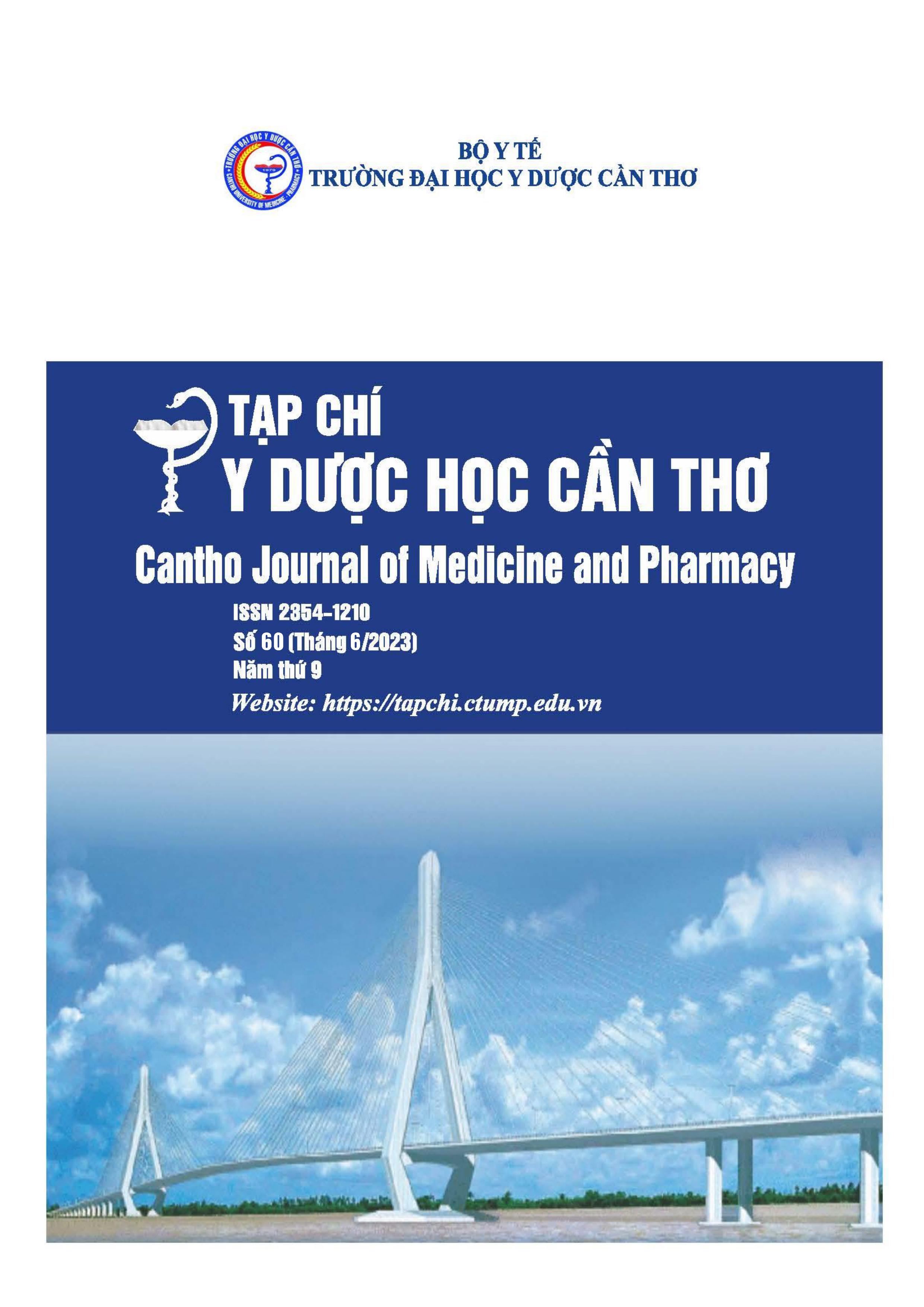RESULTS OF CARE AND TREATMENT OF PATIENTS AFTER URINARY FIBROSURGERY AT HAU GIANG GENERAL HOSPITAL
Main Article Content
Abstract
Background: Caring for patients after urolithiasis is an important part of the entire treatment process, helping to increase treatment results and promote recovery. Objectives: 1). To describe some clinical and paraclinical characteristics of patients undergoing surgery for urolithiasis; 2). To analyse the patient care outcomes and to explore associated factors with the care outcomes of patients undergoing urolithiasis surgery. Materials and methods: A cross-sectional, prospective description was conducted on 220 patients indicated for surgery to treat urolithiasis at Renal - Urology, Hau Giang General Hospital from November 2020 to April 2021. Results: 88.6% of patients had hip/back pain/abdominal pain; 18 patients had dysuria/dysuria; there was 1 case of hematuria (0.5%); 4 cases of fever accounted for 1.8%. Most of the patients had a disease duration of < 3 months, accounting for 95.5%. White blood cells increased 42.3%; urea increase accounted for 5% and 3.6% increase in creatinine. 48.1% of ureteral stones alone; 6.4% kidney stones alone; 3.6% bladder stones alone, 40.5% kidney stones + ureteral stones. 61.4% stones on the right. The rate of patient care outcome assessment reached 75.5%. Related factors: malnourished patients had the lowest good care results, accounting for 55.6%; the highest is normal nutrition accounting for 82.2%; no medical history had better care outcomes, 82.0% and 68.8%; The difference was statistically significant with p<0.05. Conclusions: The results of care for patients with urinary stones after surgery were not high. Need to strengthen care for patients with malnutrition and medical history.
Article Details
Keywords
urolithiasis, nursing care, clinical
References
2. Trần Văn Sáng, Trần Ngọc Sinh. Bệnh học niệu khoa. Nhà xuất bản Phương Đông. 2003. 95- 115.
3. Bệnh viện Đa khoa tỉnh Hậu Giang. Báo cáo hoạt động chuyên môn 6 tháng đầu năm. 2020.
4. Vũ Thị Hiếu. Đánh giá kết quả chăm sóc người bệnh sau mổ lấy sỏi thận tại bệnh viện Thanh Nhàn. Đề tài cấp cơ sở. 2016.
5. Nguyễn Đình Đức, Phạm Anh Tuấn, Lê Anh Dũng và cộng sự. Đánh giá kết quả điều trị sỏi tiết niệu bằng phương pháp tản sỏi ngoài cơ thể tại bệnh viện đa khoa tỉnh Ninh Bình. Tạp chí Y học Việt Nam. 2013. 245-250.
6. Danh Ngọc Minh, Phạm Văn Đởm, Lê Minh Hòa. Kết quả chăm sóc người bệnh sau phẫu thuật nội soi đường tiết niệu và một số yếu tố liên quan tại Bệnh viện đa khoa tỉnh Kiên Giang. Tạp chí Y học cộng đồng. 2020. 60(7), 99-105.
7. Đỗ Minh Trí, Nguyễn Công Hiếu, Đào Quang Trung. Đặc điểm cận lâm sàng của người bệnh phẫu thuật sỏi tiết niệu tại Bệnh viện đa khoa Đức Giang. Tạp chí Y học Việt Nam. 2021. 499 (1&2), 157-160.
8. Nguyễn Trường An. Đánh giá kết quả điều trị phẫu thuật sỏi niệu quản tại Bệnh viện trường Đại học Y dược Huế. Tạp chí Y dược học Huế. 2014.
9. Nguyễn Thị Lệ Thuỷ. Thực trạng kiến thức dự phòng sỏi thận tái phát ở người bệnh phẫu thuật sỏi thận tại Bệnh viện đa khoa tỉnh Nam Định. Tạp chí Khoa học Điều dưỡng. 2021. 4(2), 15-19.
10. Lê Đình Khánh, Trần Ngọc Khánh, Ngô Thanh Liêm và cộng sự. Phẫu thuật nội soi một cổng sau phúc mạc điều trị sỏi tiết niệu tại Bệnh viện trung ương Huế. Tạp chí Y học Việt Nam. 2013. 37-43.
11. Lê Văn Quang, Nguyễn Phương Nhung và Nguyễn Thị Thanh Hà. Nghiên cứu bước đầu yếu tố ảnh hưởng và kết quả điều trị sỏi thận bằng phương pháp tán sỏi ngoài cơ thể tại Bệnh viện C Thái Nguyên năm 2015. Tạp chí Y học Việt Nam. 2015. 449, 56-62.
12. Nguyễn Thị Thu Hương, Nguyễn Thị Huyền Trang, Đỗ Thị Hòa và cộng sự. Kiến thức về tuân thủ chế độ ăn uống của người bệnh sỏi tiết niệu tại Bệnh viện đa khoa tỉnh Nam Định năm 2018. Tạp chí Khoa học Điều dưỡng. 2018. 2(3), 5-10.


